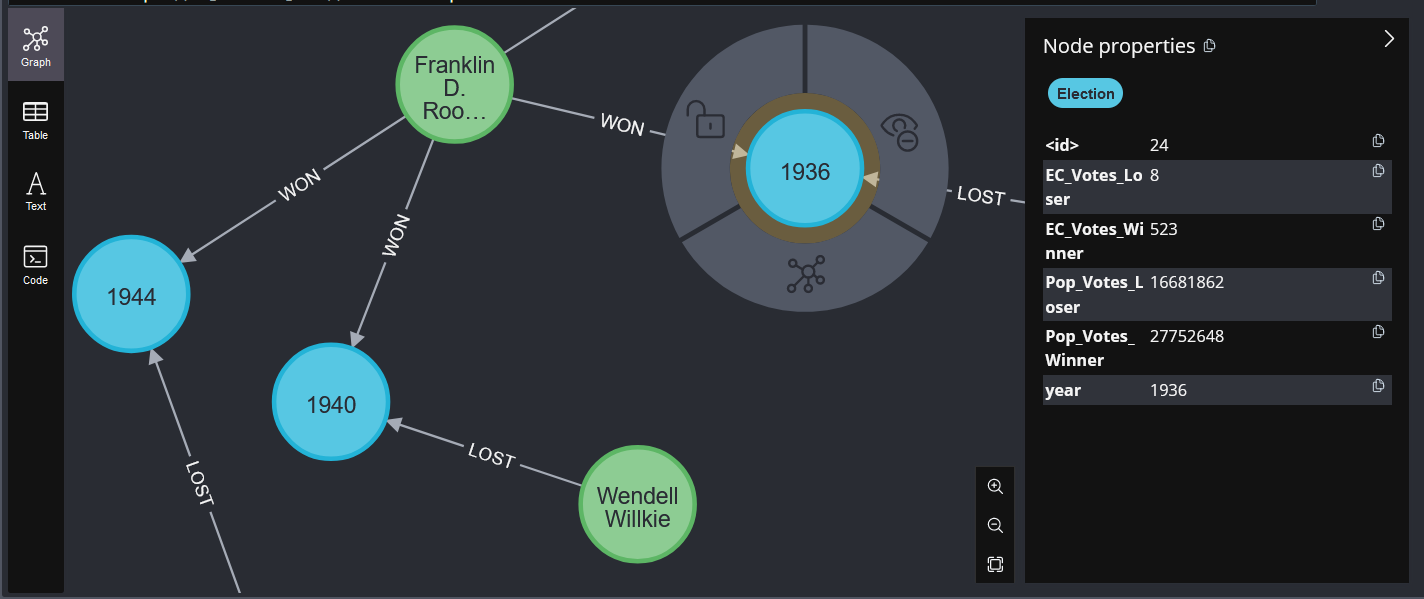When I first encountered the idea of labeled property graph data storage, I thought about the Dirk Gently Holistic Detective Agency series — where a belief in the fundamental interconnectedness of things plays a central role to the plot. Traditional SQL storage stored information and relationships were defined by cross-referencing a field (or more) between tables. The creators of graph databases sought to store the relationships along with data elements.
A labeled property graph database store nodes – the circles below – and define relationships – the lines – between nodes. Relationships are a way to show the interconnectedness of all things — people who purchased items, individuals who acted or directed films. I am looking at graph databases to maintain plant hybridization records — relationships build the family tree.
Nodes can have a label – essentially a classification, here I have “Candidate” nodes and “Election” nodes. A node can have multiple labels — maybe a political party affiliation as well as candidate. Nodes can include relationships to themselves (I’ve met me?)
Relationships have a type – WON or LOST here. Relationships are also directional – an election didn’t win a dude, a dude won an election.
Both nodes and relationships can have properties – additional information about the entity. In this example, each election node stores a year in which the election took place along with the vote totals both popular vote and electoral college results.
